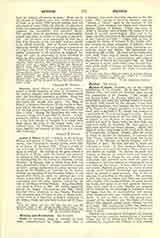

Adytum (from aduton; sc. a privative + duo = enter), a secret chamber or place of retirement in the ancient temples, and esteemed the most sacred spot; the innermost sanctuary or shrine. None but the officiating priests were permitted to enter. From this place the oracles were given. The Holy of Holies, or Sanctum Sanctorum, of the temple of Solomon was of the nature of the pagan adytum; none but the high priest being admitted into it, and he but once a year. Among the Egyptians the secos was the same thing, and is described by Strabo. A well-preserved adytum that has come to our knowledge is in the little temple in Pompeii; it is raised some steps above the level of the temple itself, and is without light. In Christian architecture it sometimes signifies the chancel, or altar end of a church. (See Chancel.)
THOMAS POOLE

